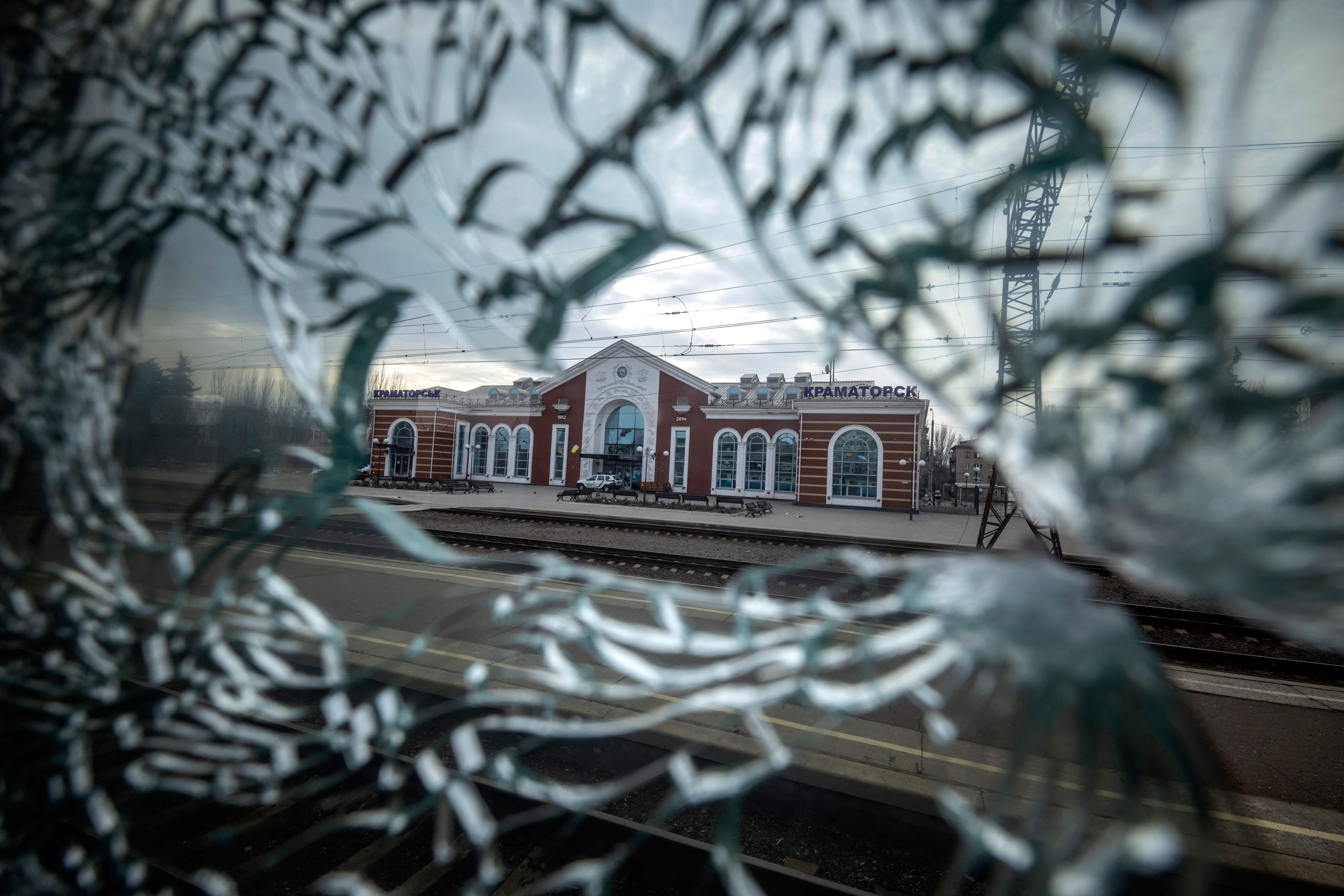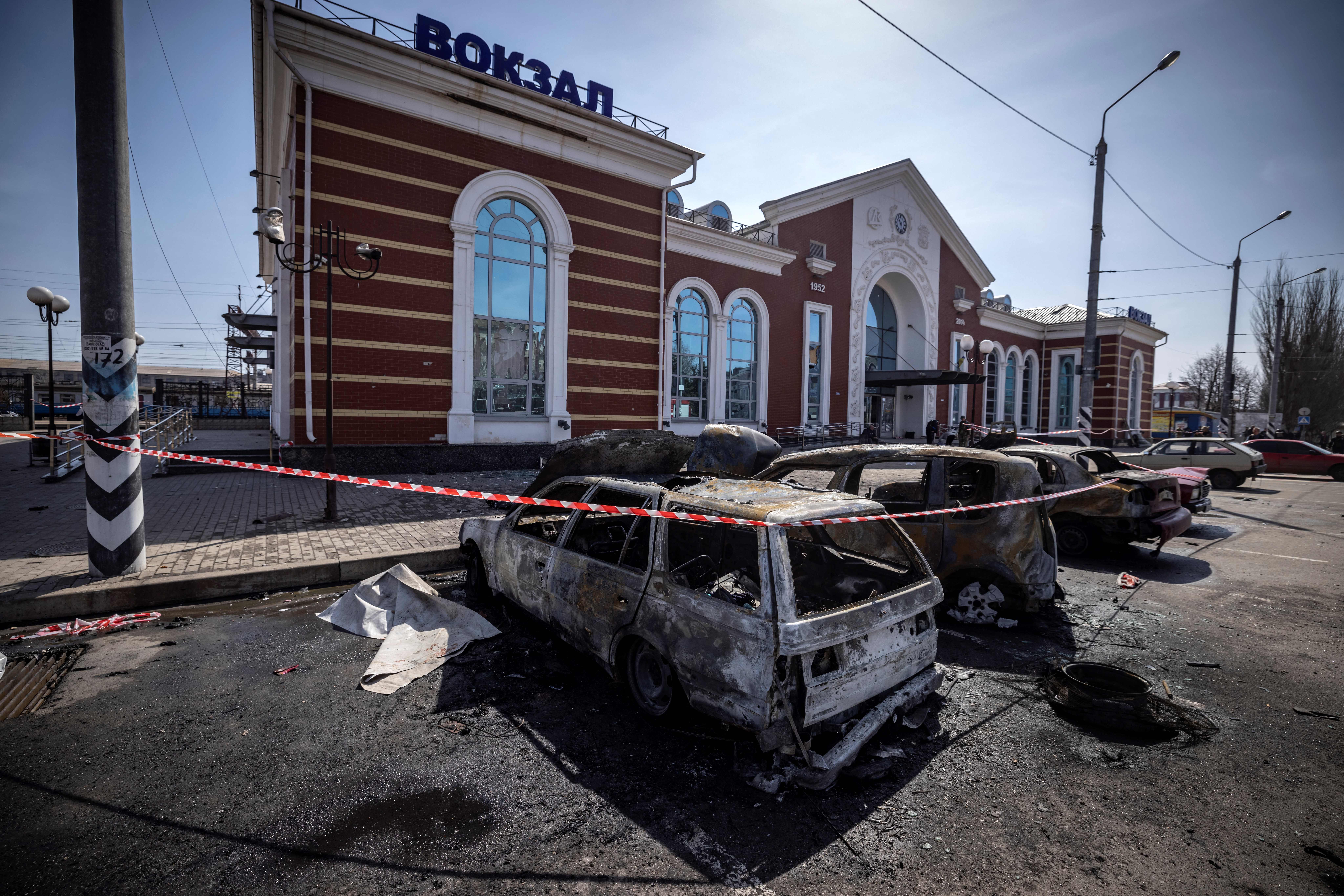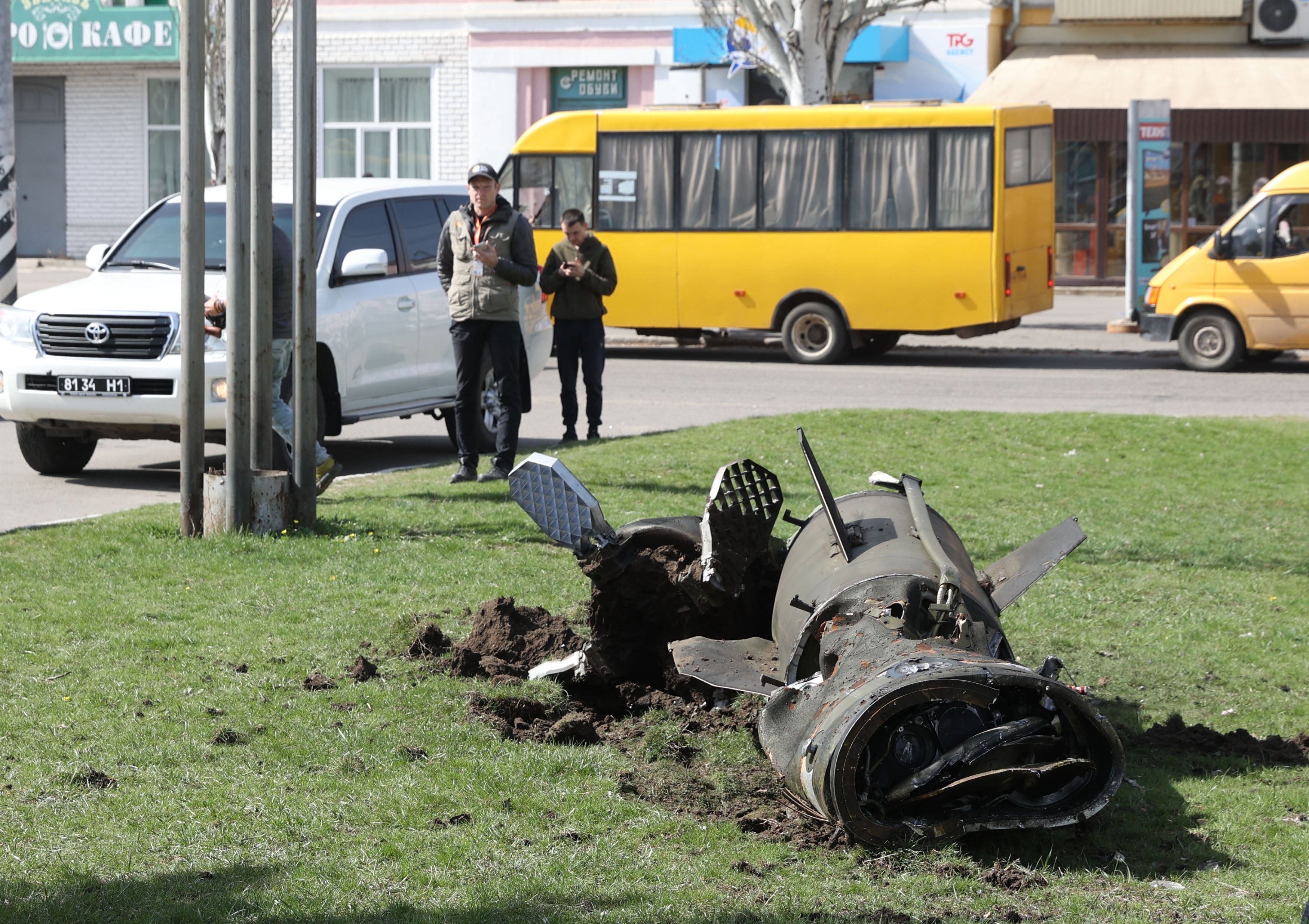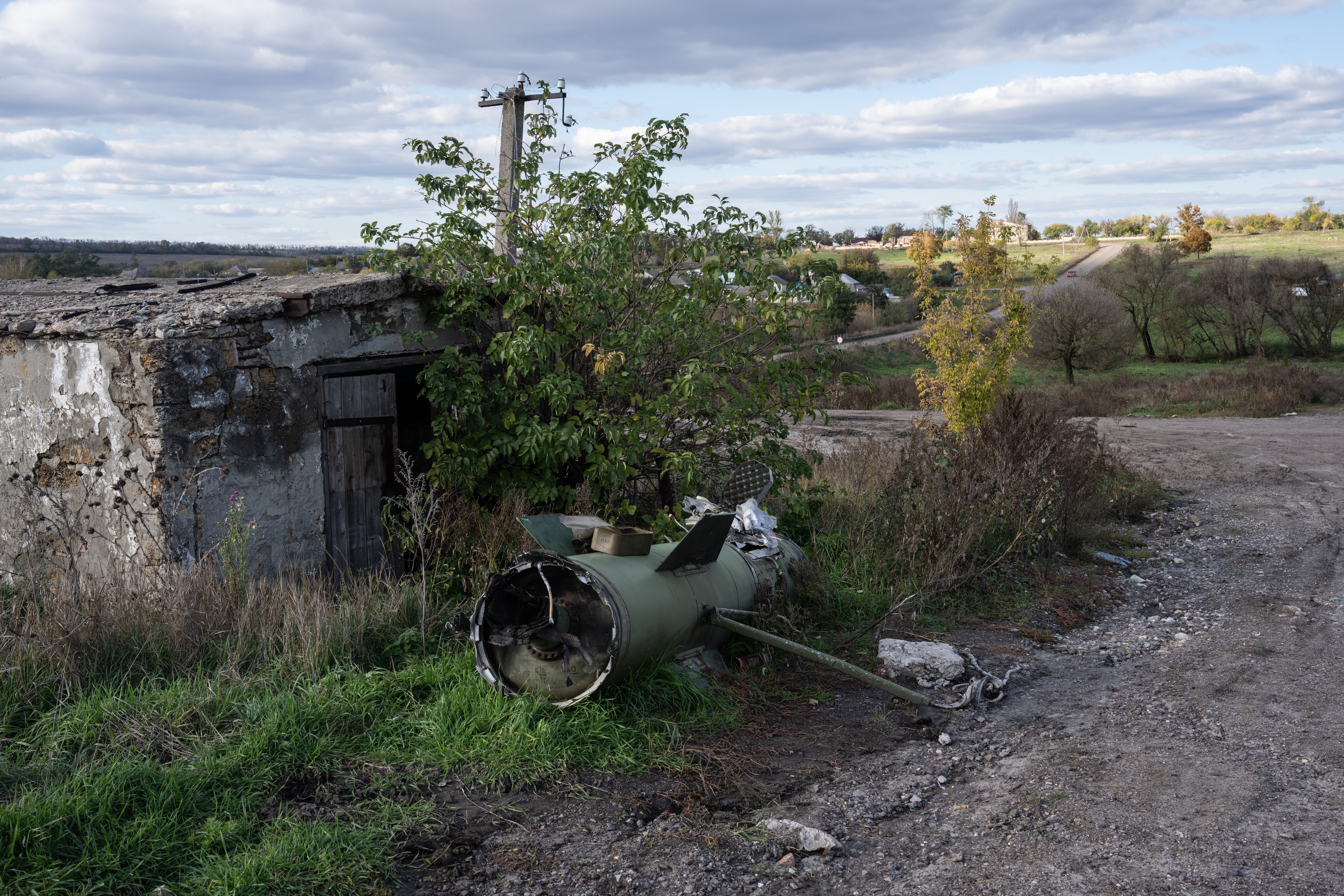Russia targeted civilian evacuations with banned cluster munitions, HRW report finds
Satellite images and field visits ‘clearly’ contradict Russia’s argument for saying it wasn’t behind the attack on Kramatorsk station which killed 58 civilians, researchers say
![Ukrainian police inspect the remains of a large rocket with the words ‘for [the] children’ in Russian next to the main building of a train station in Kramatorsk, eastern Ukraine](https://static.independent.co.uk/2023/02/20/11/GettyImages-1239828807.jpg)
Russia targeted civilian evacuations from a Ukrainian railway station using banned cluster munitions in one of the worst atrocities of the year-long conflict, a new investigation has found.
The Kramatorsk station attack in April last year remains one of the deadliest single incidents of the war in terms of civilian casualties, killing more than 58 people including five children and injuring more than a hundred.
Russia and Ukraine have both accused each other of being behind the attack at the crowded railway station, which was inside Ukrainian territory and one of the last active rail lines away from the Donetsk front line at the time.
Both sides have said short-range Tochka-U ballistic missiles, which are notoriously inaccurate, were used in the Kramatorsk attack, with Volodymyr Zelensky saying at the time that it would be “one of the charges at the tribunal” of Russian war crimes. Russia said it was not responsible, arguing that it was not deploying Tochka-U missiles in Ukraine at that time.
Yet analysis released by Human Rights Watch on the eve of the war’s one-year anniversary provides compelling evidence that the basis of Russia’s denial is “completely unfounded”, said the organisation’s researcher Richard Weir.
In collaboration with Situ Research, HRW compiled evidence showing Russia has likely deployed Tochka-U missile systems in Ukraine from the first day of invasion, especially from a facility in the village of Kunie near Izium, and that these missiles were present around the time of the Kramatorsk attack on 8 April. Kunie is less than 100km away from Kramatorsk, well within the missiles’ range.
High-resolution satellite images taken just a week after the attack showed remnants of several large rectangular containers – akin to the 9Ya234 transport containers for Tochka-U missiles in shape, size and colour – on a concrete slab outside the Kunie facility, the HRW and Situ research shows.
Three residents interviewed by HRW said they saw Russian vehicles consistent with those associated with the Tochka-U missile system, including in some cases those used to launch and load missiles, as well as the long, green rectangular containers.
“Our research shows clearly, convincingly and irrefutably that Russia had and was using these weapons inside Ukraine around the time of this attack,” Mr Weir told The Independent.

The missile that hit Kramatorsk bore a silver inscription in Cyrillic reading “For [the] children”, described by analysts at the time as a possible reference to Russian propaganda arguing that the Ukraine invasion was necessary to ensure the security of the nation for future generations.
It proved grimly ironic given the number of children killed and injured in the attack, which HRW reconstructs in minute-by-minute detail in the new report.
Several hundred civilians were waiting for a train to leave the station when the missile struck at 10.48am, detonating a warhead containing around 50 clusters or submunitions that exploded across the platform and train tracks over a wide area, sending bodies and body parts flying.
Many of those who survived the initial explosions were struck by flying shrapnel, with the 9N123K warhead used in the attack able to scatter 15,800 of these pre-formed metal fragments – all potentially lethal projectiles.
Vladyslav Kopychko tried to shelter under a bench at the station after he heard the first explosion and then a whistling sound, after which there was another big blast followed by at least 10 others.

“I screamed to avoid barotrauma and felt that something penetrated my body. Then I raised my head and saw a dead man. I saw his brain, torn leg – this person lying on me with his face towards me,” the 27-year-old told HRW.
“I understood that he was not alive. I then saw that I was bleeding and pierced with metal on my back, my pelvis, and my buttocks,” he said, adding that if he hadn’t heard the whistling “I wouldn’t have gone to hide and could have been killed”.
“This attack clearly demonstrates how horrific the consequences are when cluster munitions are used and these types of weapons spread small and lethal bombs all over a wide area. They are not specifically targeted and this specific type of weapon spreads 50 of these bombs over a large area – the size of a football pitch,” said Mr Weir, a member of the team which carried out the HRW investigation that included visits to Kramatorsk as well as to liberated former Russian military sites in the region.
Mr Weir said that a survivor he spoke to described trying to treat people using diapers because of a lack of available medical supplies, while belts were used as makeshift tourniquets.

He was told by the doctors that they were immediately overwhelmed and had to call in the support of medical staff from hospitals in surrounding areas. Doctors worked all through the day and night to save lives, stabilising patients.
Cluster weapons like those carried by the Tochka-U missile that hit Kramatorsk are banned by more than 100 nations, parties to the 2008 Convention on Cluster Munitions. Their use is widely considered to be a violation of international humanitarian law given their extreme inaccuracy, making it hard to discriminate between combatants and civilians.

“This was a violent and vicious attack by a weapon designed to evade interception and to injure and kill as many as possible,” Mr Weir said, and a stark reminder that neither Russia nor Ukraine are parties to the 2008 Convention that might have prevented their use.
Mr Weir added that while the train tracks are dual-use infrastructure that could be deemed a military target, the fact that missile exploded at a station filled with hundreds of civilians makes it one of the most compelling cases of a war crime committed by Russia in Ukraine.
Join our commenting forum
Join thought-provoking conversations, follow other Independent readers and see their replies
Comments



Bookmark popover
Removed from bookmarks